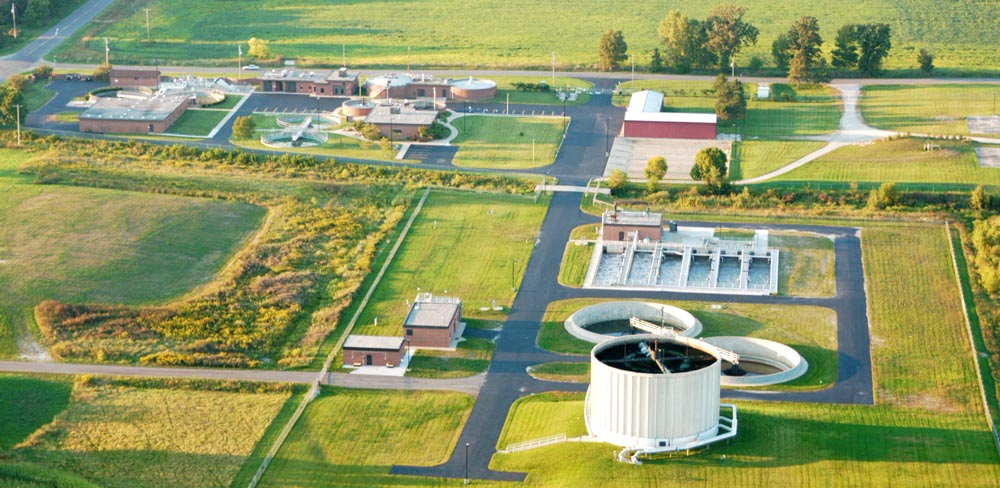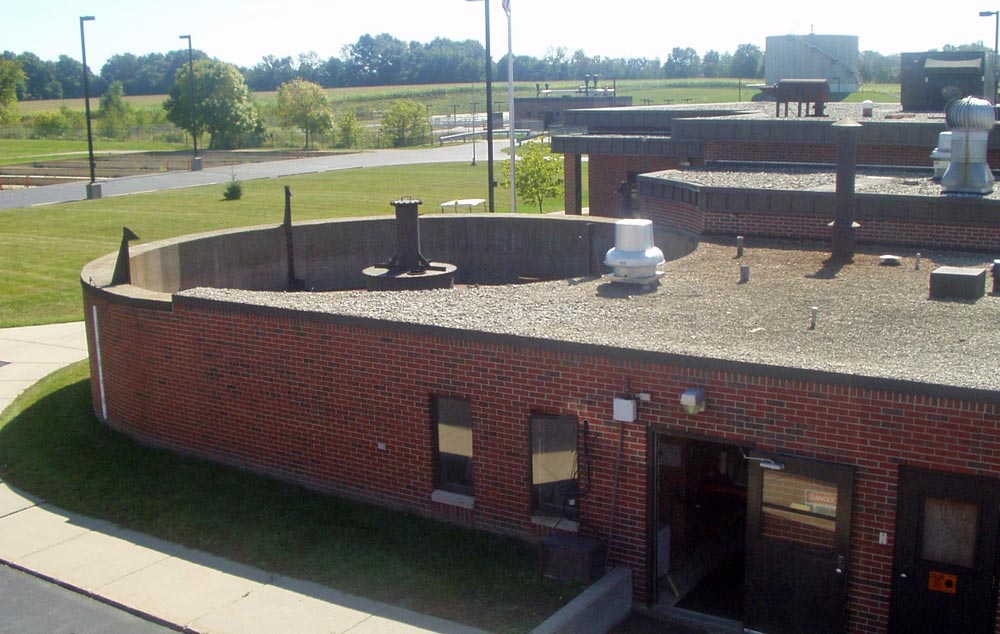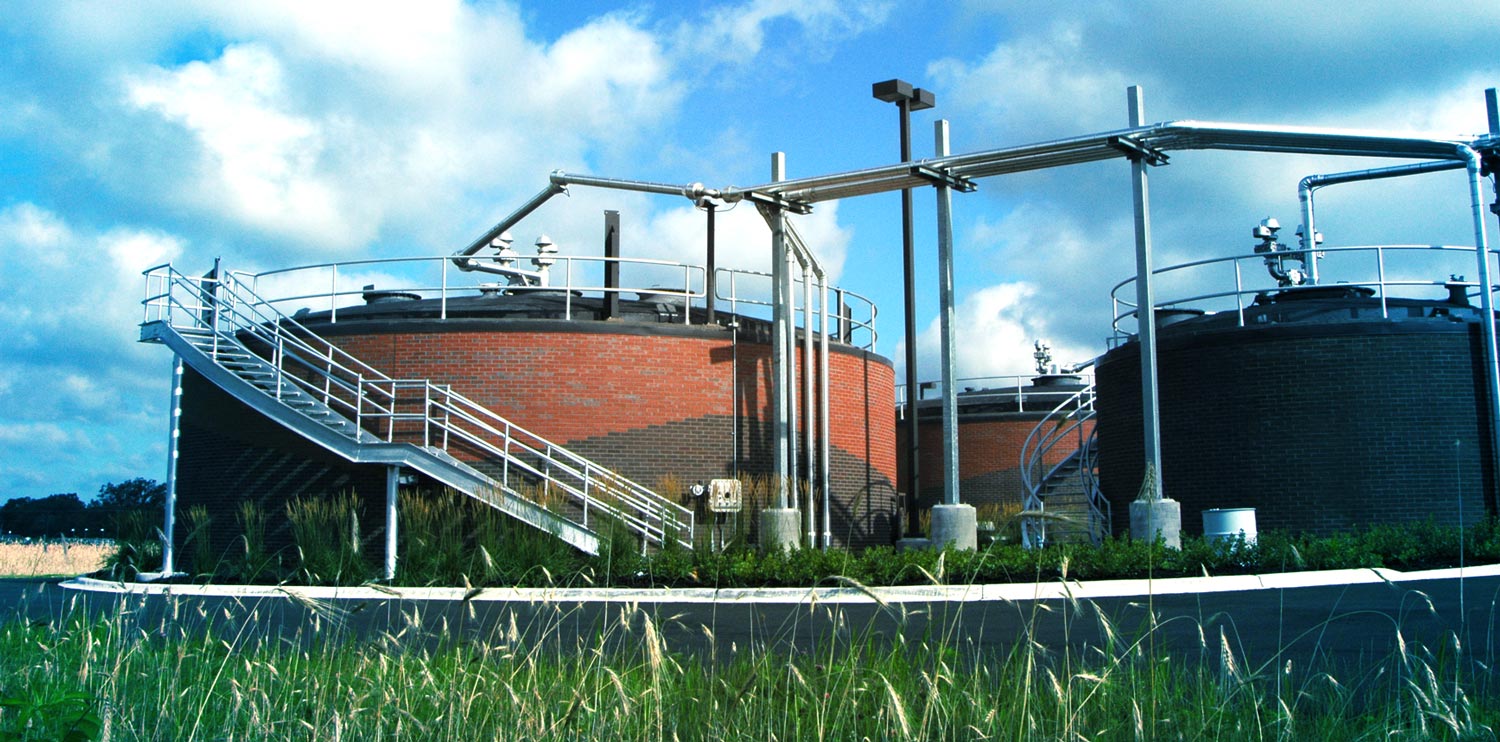Project Details
Client |
Location |
Services |
| Delhi Charter Township | Holt, MI |
The Delhi Charter Township POTW has been in operation since 1962. The wastewater treatment plant serves 7,645 customers and has an average daily flow rate of 2.5 mgd and an average design flow rate of 4.5 mgd. The plant is activated sludge with influent grinding, grit removal, primary clarifiers, aeration tanks, secondary clarifiers, nitrification tower and chlorination/dechlorination. Sludge is anaerobically digested using an Integrated Biomass to Energy System (IBES) installed in 2009.
During IBES digestion system operation, one of five heat exchangers, used to preheat the raw sludge, was subject to frequent plugging with “roped” material required cleaning every two days resulting in a large operational expense. Other processes that required frequent cleaning due to presence of rags, plastics, other fibrous material, etc.; included primary clarifiers, sludge wasting pumps, telescopic valves and sludge storage decant valves. The existing influent sewage grinding and capture was not effectively removing materials from the wastewater.

It was decided that new headworks screening and screenings wash/compaction would effectively remove the materials that were causing frequent cleaning of several processes. POTW and HRC staff visited several wastewater treatment plants that use “bar” screens. During the visits it was noted that bar screens had excessive pass through of the materials that should be removed, the screening equipment had grease balls and strings hanging, resultant screenings removed were very dirty, and the primary and secondary clarifiers as well as the aeration tanks had materials floating on their surfaces. Several other facilities plants that used “perforated” screens with holes ranging in size from 1 mm (1/8th inch) to 6 mm (1/4 inch) diameter. Screens with perforated plates are termed band screens, drum screens, fine screens, and step screens. Several wastewater treatment plants were visited to view actual installations. The most common perforation diameters were 3 mm and 6 mm.
To help determine the correct screen Township POTW staff developed and conducted a study using slide gates with four different screens: 1/8th inch round holes, ¼ inch round holes, ¼ inch “bar” holes and a window screen which was about 1 mm hole size. The study showed the best performance was obtained with 1/8th inch round holes. This configuration removed about 4 times as much material as the bar shaped openings.

Further confirmation of the type and size of openings was provided in a publication titled “National Screen Evaluation Facility, Inlet Screen Comparative Report” performed between 1999 and 2011 by the UK Water Industry Research. The results of actual performance testing and O&M requirements on 27 different types/configurations/sizes of screens were presented in the report. The screen type and size which showed the best performance and lowest O&M costs was the 3 mm band screen. Thus this headworks screen was chosen for the POTW.
The location of the two new automated band screens, washers/compactors and bypass channel was limited, governed by the location of the existing raw sewage screw pumps upstream and the aerated grit tank downstream. Demolition of the existing grinding and capture equipment and concrete channels was performed and totally new channels enclosed within a building were constructed in which the band screens are located.
Since beginning operation of the new band screen and washer/compactor, cleaning of the digesters heat exchanger dropped to once every 4 to 6 months and cleaning of the other processes has been reduced significantly.


